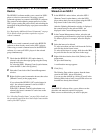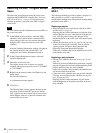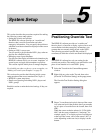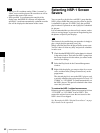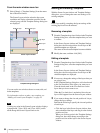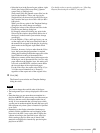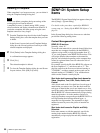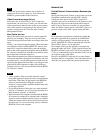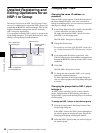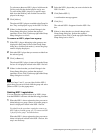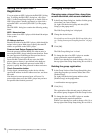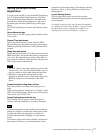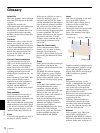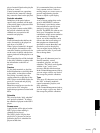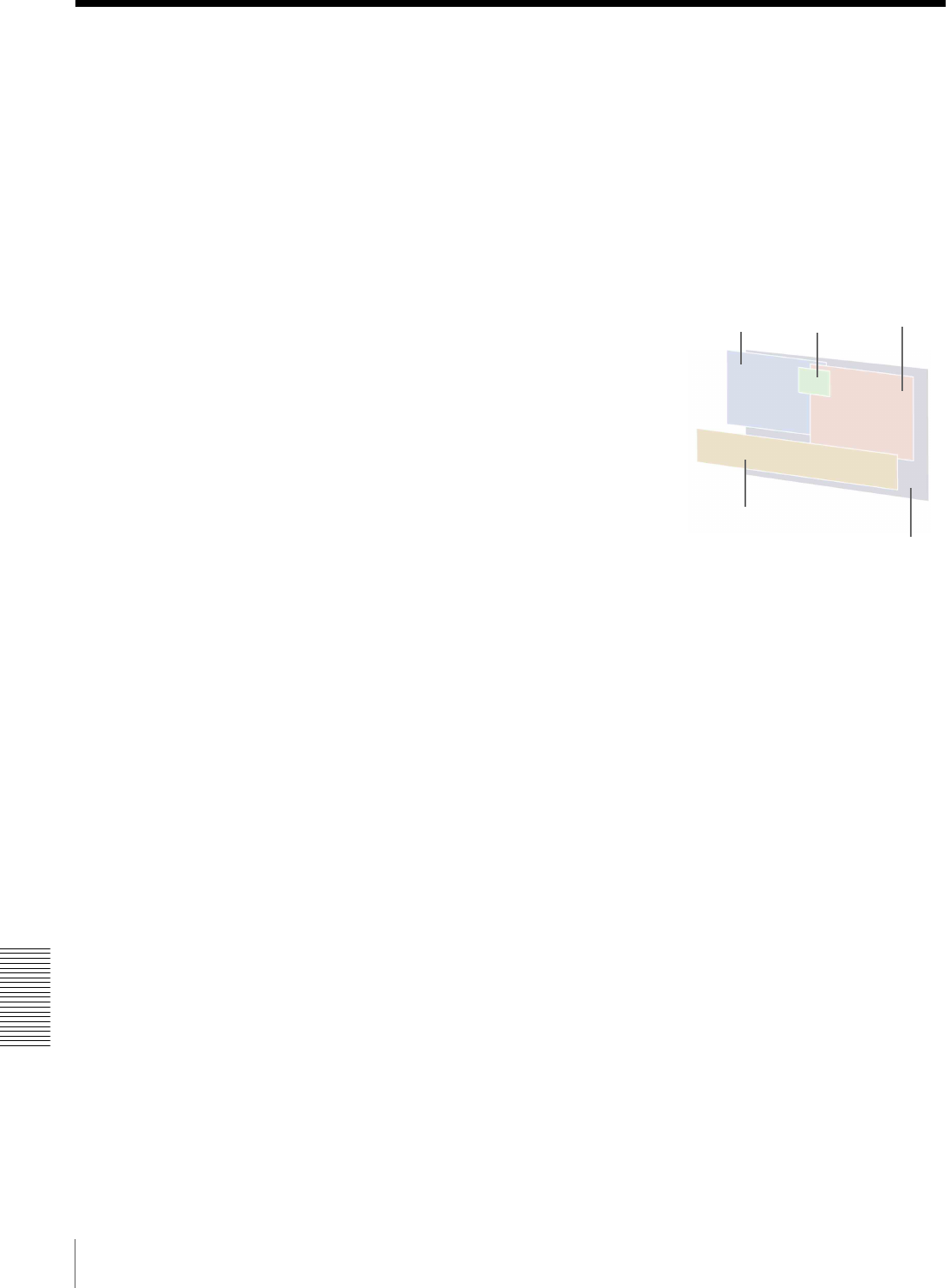
72
Glossary
Appendix
Glossary
Actual file
The video, graphics, audio, and Flash
files created for playout on the NSP-
1 players.
Original files created with
conventional application software are
referred to as the “actual files.”
The BZNP-D1 software allows you
to register the locations and other
attributes, such as titles, of these files
as materials.
Contents
Information, such as video and still
images, text, sound, and music, and
any combinations of this information.
In the Content Management window,
playlists and schedules are added, so
that all items that are required for
playout on the NSP-1 players are
registered as “contents.”
Control, Control command
A system provided to control an
NSP-1 or a device connected to an
NSP-1. Actions such as adjusting
output audio level of the NSP-1
player, turning the power on/off, and
switching the input signal of the
plasma display or projector, etc., are
available.
Some commands for the NSP-1 and
Sony’s plasma displays whose
operations have been confirmed in
combination with the NSP-1 are
supplied with the BZNP-D1
software. You can add more control
commands.
Daily schedule
Listed information for each day in
which sets of a time period and
playlist to be played in that period are
specified like a time table.
The control commands for adjusting
output audio level of an NSP-1 player
or for devices connected to the NSP-
1, such as plasma displays, can be
specified in the daily schedule, too.
Event
A record of data specified in a cell of
the playlist or daily schedule.
In the case of a playlist, an event is
created by dropping a piece of
material on the playlist. The event
contains information on the dropped
piece of material, start time, duration,
and position and size on the screen.
In the case of a daily schedule, an
event is created by dropping a playlist
or control command. The event
contains information on the dropped
playlist and start time, or on the
dropped control command and the
time when the command will be
carried out.
Flash file, Flash movie
A file in the Macromedia Flash
format (.swf). It is used to display
animation on web browsers.
On NSP-1 players, Flash movies are
played using the Macromedia Flash
Player.
Group
NSP-1 players classified according to
the contents to be played, the
resolution, and the orientation of the
display.
The BZNP-D1 software manages
NSP-1 players by groups. Playlists
and schedules are created for each
group, not for each NSP-1 player, and
data transfer is done group by group.
Index
A nine-digit code (number) used to
identify the materials, control
commands, playlists and daily
schedules by the BZNP-D1 software.
When you add a new piece of
material or create a new schedule, a
new index is assigned to it.
In the Content Management window,
all items except for the periodic
schedules are displayed with their
respective index numbers.
Note that 999000 and greater index
numbers for each content are
reserved for system use. The index
numbers available for users are
between 000001 and 998999.
Layer
One of the five display or one audio
layer, of the NSP-1 player.
The NSP-1 plays a single piece of
material at a time on each layer,
according to the playlist.
The display layers are overlaid in the
order as shown in the following
figure. (The numbers in the figure
show the order.)
Graphics material is displayed on any
of the background, graphics, or logo
layers. And the graphics layer can
display Flash movies and web pages
(URL) in addition to graphics
material.
Layout
The positions and sizes, on the
display, of materials that are played
simultaneously. The positions and
sizes of the layers (except for the
audio layer) determine display of one
piece of material at a time.
Each event of the playlist has layout
information even though it is not
displayed on the list.
Normally, layout information is
automatically added to the event
according to the selected template,
but you can adjust the layout on the
event line of the playlist.
Material
Video, graphics, text, URL (web
pages), audio, and Flash files
registered in the BZNP-D1 software.
Playlists are created by listing these
materials in the order of playout. (A
Logo (4) Video (3)Graphics (2)
Text (5)
Background (1)



